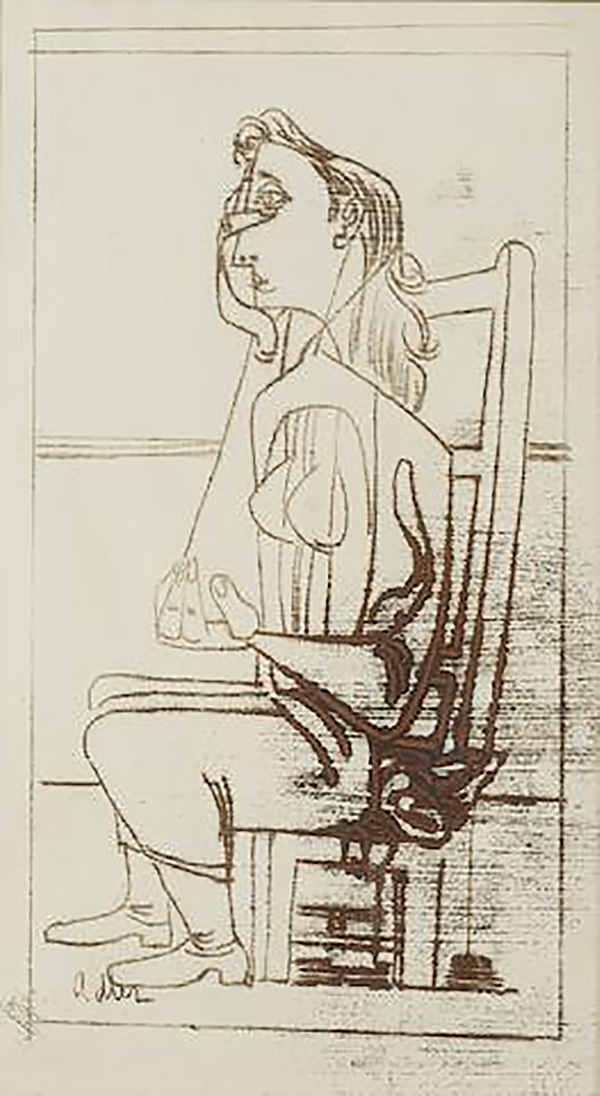Polish painter Jankel Adler was born at Tuszyn and studied in Germany at the School of Arts and Crafts in Barmen (now part of Wuppertal), 1913–14. In about 1922 he settled in Düsseldorf, where he became a friend of Paul *Klee and painted several murals, including frescos for the Planetarium. He left Germany in 1933 because of the rise of Nazism and travelled widely in the next few years, living mainly in Paris, where he worked with *Hayter at Atelier 17. On the outbreak of war he joined the Polish army in France and in 1940 was evacuated to Britain, where he lived for the rest of his life, first in Scotland and then from 1943 in London. Adler was primarily a figure painter, best known for his portrayals of Jewish life in Poland (as a youth he had considered becoming a rabbi). His style in his mature work was eclectic and expressionistic, influenced by Klee and Picasso.
In turn his cosmopolitanism was a stimulus against wartime isolation for several young British artists, notably *Colquhoun and *MacBryde (in the mid-1940s Adler shared a house with them in Bedford Gardens, London). He was born as the seventh of ten children in Tuszyn, a suburb of Lódz. In 1912 he began training as an engraver with his uncle in Belgrade. He moved in 1914 to Germany where he lived for a time with his sister in Barmen. There he studied at the college of arts and crafts with professor Gustav Wiethücher. From 1918-1919 he went back to Lódz, where he was joint founder of “Jung Jidysz”, a group of avant-garde artists. In 1920 he returned briefly to Berlin; in 1921 he returned to Barmen, and in 1922 he moved to Düsseldorf. There he became a teacher at the Academy of Arts, and became acquainted with Paul Klee, who influenced his work. A painting by Adler received a gold medal at the exhibition ‘German art Düsseldorf’ in 1928.
In 1929 and 1930 he went on study trips in Mallorca and other places in Spain. During the election campaign of July 1932 he published with a group of leftist artists and intellectuals an urgent appeal against the policy of the National Socialists and for communism. As a modern artist, and especially as a Jew, he faced persecution under Hitler’s regime, which took power in 1933. In that year, two of his pictures were displayed by the Nazis at the Mannheimer Arts Centre as examples of degenerate art, and Adler left Germany, staying in Paris where he regarded his exile consciously as political resistance against the fascist regime in Germany. In the years that followed, he made numerous journeys to Poland, Italy, Yugoslavia, Czechoslovakia, Romania and the Soviet Union. In 1937, the Nazis seized twenty-five of his works from public collections and four were shown in the Entartete Kunst (Degenerate Art) exhibition in Munich. With the outbreak of World War II in 1939, he volunteered for the Polish army that had been reconstituted in France; in 1941 he was dismissed for health reasons and lived thereafter in Kirkcudbright in Scotland. In 1943 he moved to London. Died in Whitley Cottage near Aldbourne on April 25, 1949 at the age of 53 years and with the bitter knowledge that none of his nine brothers and sisters had survived the Holocaust.

Jankel ADLER Seated Figure